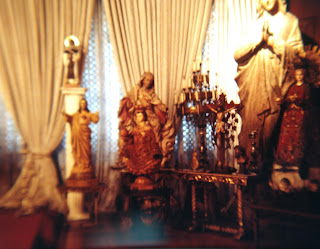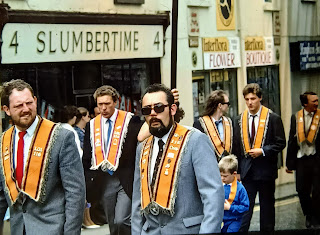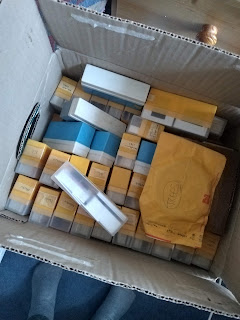Lino Brocka's Philippines and Ferdinand and Imelda Marcos's Malacañang Palace, Manila
The Philippines, what a place. An edgy Asian Wild West, full of music and the loveliest people. I once returned there for a holiday on my own. I stayed in Manila (in a hotel that turned out to be a brothel) and then travelled down to the stunningly beautiful island of Boracay. Those slides will surface eventually.
I worked on several films there, including Bayan Ko Pilipinas, (1987) a profile of the film director Lino Brocka.
 |
| Lino Brocka |
Lino was a cult hero, a folk hero, man of the people. We filmed a march to the Palace, days after several nuns had been fired at, with Lino (and us) at the very front. This wasn't long after the Mendiola Massacre. My first experience of a political march. What I remember most is the flow. Of being carried along by the emotion and the fear. A strange, silent purpose. We were marching towards the guns, to the stand-off on the bridge where those nuns had been shot just a day or so before, and the site of the Massacre just weeks earlier.
After that we went to the mountainous landscape outside Manila to film the New People's Army, NPA Guerillas. Because we were with Lino we were safe.
We were blindfolded as the Jeepney drove out of Manila so that we didn't know where we were going (as if!).
We'd be camping and I had had to pull together several days' food for our crew. I did what I could with the food, bought in baffling Filipino mini-marts. I'd brought the camping cooker and sleeping bags with me from London. Really good ones (the crew were used to 5* hotels all the way and had to be kept as comfortable as was possible. This wasn't only for wellbeing but for security as well. I should add that most of our productions were co-productions, so these trips were funded by the investor, who got world sales rights, rather than the licence-fee payer). At the end of the filming I gave them the option of buying theirs from the BBC at a huge discount, and most did. I think we gave one to Lino. When I returned to London and did the costings, the BBC didn't have a clue how to deal with money coming back in on 2nd hand sales.
Anyway, the crew were comfortable but they were not at all happy. They were extremely grumpy. They complained about my camping cooking, calling me Fanny Craddock for the whole journey. I stayed out of their way as much as I could.
Most filming trips in faraway places were of a few weeks' duration, anything from 2 to 5 weeks. The problem with this crew was unusual. They'd already been in the country a while, filming a Panorama documentary. We'd inherited them and they were already tired and had bonded in their 'them and us' Crew vs Production grumpiness.
We usually attracted the BBC's most experienced camera and sound men for our arty cultural travel programmes. Not only the best technicians but the most wonderful companions, and such conflicts were rare.
After our first day's trek, we stopped for the night in a jungle hut, one of those huts that's just there in the middle of nowhere for anybody to use. We slept on wooden ledges. God knows what we did for loos. Then came a truly frightening moment.
Later, we filmed Lino making one of his feature films and I appeared in a party scene. I don't know which film. Bayan Ko (My Country, 1984) was already out by then. Maybe Ora Pro Nobis (1989). A handy fair-haired Western extra. Lino was nominated for several Palm D'Or awards at the Cannes Film Festival. Very sadly, in 1991, he was killed in a road traffic accident. I still think of him when I use my blue down sleeping bag.
We filmed inside Marcos and Imelda's Palace. The Marcoses had jailed Lino and he was only released after the People Power Revolution in 1986. That was when the Marcoses fled, leaving everything in the Palace as it was. (To distance herself from the decadence revealed inside, the next President, Corazon Aquino, chose to live elsewhere.)
This was FASCINATING! Just wonderful to snoop around the private rooms of such characters.... It was very dark, full of religious iconography, and, yes, there were many shoes.












Such fascinating stories you are sharing here - capturing a moment in time and priceless shots! What an experience this must have been...
ReplyDelete